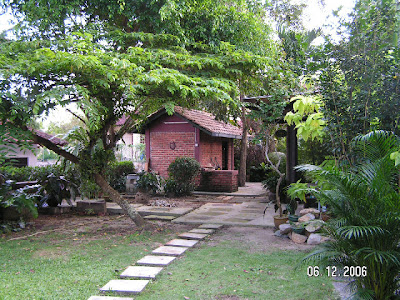 Photo: Dany Ng
Photo: Dany NgTake Control Of Your Photographs
By Diana Cooper
Before investing in a camera, consider choosing one that offers manual features in which you can control the outcome of your pictures. The two basic features are aperture and shutter speed. Just by understanding how they work you can turn your photographs into a piece of art.
First let me explain depth of field (DOF). DOF is the distance from the foreground to the background of the picture that is in sharp focus. An increase DOF makes wonderful landscape pictures such as a view of a valley where everything is in sharp focus including the flowers nearby, the mountains in the distance and all of nature's beauty in between. A decreased DOF works well when you want to blur the clutter in the background so the subject will stand out clearly.
One way to choose your DOF is by adjusting the aperture. Aperture is the diameter of an opening in the camera which exposes the lens and allows light to enter. The smaller the aperture (for example, f/22), the greater DOF you will have leaving you with a sharp picture. Your DOF is less when the opening is larger (for example, f/2) thus giving you a blurred background.
Lens focal length and the distance of your subject you will focus on are a couple of other ways to control DOF. Using a wide lens will increase your DOF and using a telephoto lens will decrease your DOF. Focusing on your subject in a far distance will have a greater DOF than focusing on your subject in a close distance.
Shutter speed is another way you can make a difference with your pictures. You can capture action by either creating a blurred motion by using a slow shutter speed (for example, 1/15) which makes wonderful waterfall pictures or you can use a fast shutter speed (for example, 1/1000) and freeze the movement which can make a great shot of a gymnast in mid air as she flips over the bar.
A fun way to use a slow shutter speed is to pan your shot. Say you are taking a picture of a bicyclist passing by. Focus in on the bike and follow it with your camera as the shutter stays open. This way, the cyclist will be fairly sharp and the background will give the impression of him/her moving really fast.
Aperture and shutter speed work together when it comes to the amount of light that enters. A small aperture (opening) allows very little light to enter so you will need a slow shutter speed. With a large opening, less light is needed so you will use a faster shutter speed. When using a slow shutter speed be sure to stabilize your camera to prevent shaking which will give you a blurred background and a blurred subject. A tripod works nicely.
It may sound a little confusing at first but it really is easy once you get the hang of it. You will be amazed by how much better your photos will look by taking control of these features instead of depending on a point and shoot camera. Best of luck!
About the Author: Diana Cooper specializes in nature and wildlife photography. You can visit her website http://www.dianasphotography.com to read more photography tips and articles, to buy her earth friendly greeting cards and to visit her photo and gift shops.
Article Source: http://EzineArticles.com/?expert=Diana_Cooper http://EzineArticles.com/?Take-Control-Of-Your-Photographs&id=807356


No comments:
Post a Comment